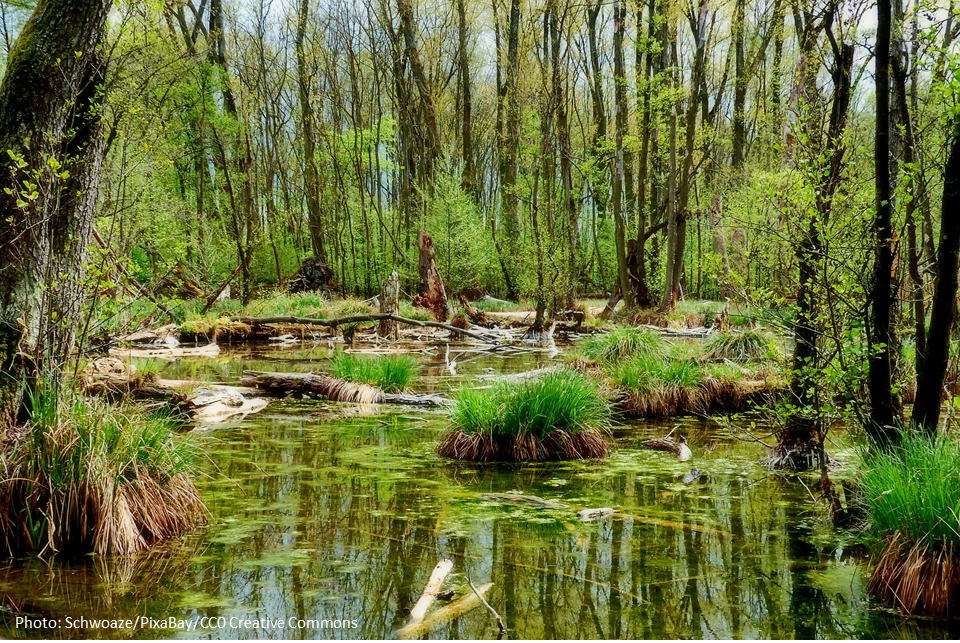How forests help cities manage water
Forests and trees play a crucial role in managing urban flooding and protecting drinking water supplies. To maximise these benefits, nature-based solutions, such as street trees and forests, are essential for resilient cities and effective partnerships should be developed between authorities from national to local level to protect rural forests. In the 2018 Spring Issue of REVOLVE Magazine, Kate Reilly from the IUCN European Regional Office explores the role of forests in filtering pollutants and slowing down and storing rain, and how these functions can be protected and restored to improve quality of life of urban citizens.

Photo: Schwoaze/CC0
Climate change is leading to an increased risk of flooding, with winter rainfall expected to be up to 35% heavier across much of Europe. Increasing urbanisation is exacerbating this problem – the impermeable surfaces in cities prevent rainfall from soaking into the ground, and the concentration of economic activities and people means flooding is an expensive problem. In addition to these high economic costs, floods have substantial social costs, including loss of life, illness and injury, and social disruptions.
City planners are increasingly interested in the role of nature in reducing flood risk. Street trees and urban forests help rainwater infiltrate into the soil, and slow down its flow over the ground. These processes reduce the risk of localised flooding. Along with their multiple other benefits, including mental wellbeing, shading and removal of air pollutants, trees and forests are an attractive nature-based solution for managing small-scale flooding in cities.
Large-scale forests in rural areas are invaluable in protecting the quality of drinking water sources. When rain falls on bare land, it erodes the soil and transports it to the river. Forests reduce this process, and prevent other contaminants being similarly washed off the land into streams. Many cities, such as Vienna, invest in forest protection, management and restoration in their upstream watersheds to protect the rivers from which they take their drinking water. This is often cost effective, as it avoids investment in filtration plants.
IUCN is the secretariat of the Bonn Challenge, which is a global effort to bring 150 million hectares of deforested and degraded land into restoration by 2020 and 350 million hectares by 2030. 47 governments, organisations and companies have already committed to bringing just over 160 million hectares into restoration. Forest restoration not only safeguards their role in protecting drinking water, but offers numerous other benefits, including climate change mitigation, biodiversity protection, and livelihoods for local people. It helps to meet European and international policy commitments, including Target 2 of the European Union Biodiversity Strategy, which aims to restore 15% of degraded ecosystems by 2020.
To achieve these goals in practice, we need to advance scientific understanding of the processes by which forests provide benefits for water-related and other challenges, and translate that knowledge into best practices for forest management and restoration. Strong partnerships are needed between authorities at local, regional and national level, and between local authorities inside and outside cities. IUCN seeks to showcase the achievements of cities, regions and countries in protecting and restoring forests to produce clean water and manage flooding for all.
To read the full story and the REVOLVE Magazine Spring Issue 2018 – How forests help cities manage water: https://issuu.com/revolve-magazine/docs/revolve_27_digital



